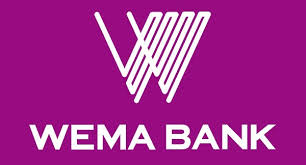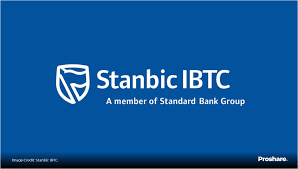WEMA BANK :A DIMINUTIVE DRIVEN BY BLUNT PROFIT ENGINE

Size is a critical factor that attracts attention and determines perception in every area of life . For this reason, bigness, beyond any doubt , confers status in the corporate world . Moreover , nvestors usually prefer them to smaller entities for certain reasons.
First, having a capacity to match the resources and global distribution of large competitors brings advantages. Second, large companies also tend to devote a disproportionate share of their resources to training and education. Third, they open the door to many of tomorrow’s mega-opportunities will require significant resources and they are significant employers. All the above are the attractions that make big corporate entities irresistible to some investors .
At least in relative term , one bank in Nigeria which ,unfortunately ,could not lay claim to any of the above advantages on the real sense of ot is Wema Bank .This , to some casual observers, is due to its size disadvantage .They may not be wrong to some extent .
Wema Bank’s balance sheet size confirms this view . Though , its total Assets inched up by 41.6% to N1.88 trillion from N1.33 trillion between June 2022 to June 2023 , and its shareholders funds by 23.4% within the same period to N89.3b from N72.3b, the bank remains the smallest when benchmarked with any other player except Unity Bank that is still ridden by negative equity .
However , despite some truth in the above argument, it could still be faulted . To the shrewd investors ,sometimes, size is not the priority , they prefer competitiveness to a mere big size. Their view is in line with a fact in the corporate world that bigness without stretch and leverage is obesity just as smallness without stretch and leverage is impotence.
By the above, since organizations are better perceived by their size and the quality of their leadership, corporate leaders are known to grow their organisations and leverage their resources to outperform their competitors. Where the two could not be achieved simultaneously , analysts believe leveraging resources for better value for money is better than to merely grow an organization.
Then , the question remains :how is Wema Bank perceived by them from the two perspectives ? In just two words the answer is palpable even to a layman .The bank is neither big nor competitive.
The unspiring fate of Wema Bank is even pinned down more to its leadership ineptitude. This argument is that where the leadership is effective, to grow will not take so many years and to leverage resources for better value delivery will not be an uphill issue. Ater all , there are many examples of companies that overcame seemingly insuperable resource handicaps and built positions of global leadership.But the case of Wema Bank is the other way round .
When a company lacks leadership with foresight, stretch, and leverage that provide the energy and rationale for proactive advantage building and industry re-engineering the case is not expected to be different.
SERIOUS CONCERNS OVER WEMA
It is ,however, a tragedy when a company is not big and not competitive as well, of the world impotent is too harsh to capture its situation. That is the story of Wema Bank ,one of the oldest banks in Nigeria operating at the treadmill.
To any observer that is less proficient on the issue of financial analysis and interpretation the above view might be too hard on this bank particularly with the recent phenomenal growth in its profitability in the first half of 2023 . Its Profit for the year moved swiftly by 99 % to N105b in the first half of 2023 from N5.3b in the corresponding period of 2022
Yet, one will be highly disingenuous to either to hide under the above absolute figures or to use historical performance yardstick as a basis for asserting the health or competitiveness of any organization .
To any informed observer , mere profit figures are not enough to ascertain a company’s competitiveness .Though looking at the performance of an organization in relation to previous years or quarters in order to identify any significant changes is imperative because without it such an organization is likely to lose its competitiveness ,however ,the danger in it is that it can lead to complacency since it is the rate of improvement compared with that of competitors that is important.
Even on the basis of the absolute figures, a comparative analysis of Wema Bank’s performance with its competitors shows is the worst , at least that profit figure is the least in the industry when Unity Bank with its negative equity is exempted . Beyond the profitability issue , its assets and shareholders funds confirm the same .
More importantly, when certain critical success factors are employed , Wema Bank is not conveying a different picture particularly among the tier 2 banks than a laggard status .
BANKING CRITICAL SUCCESS FACTORS :HOW WEMA BANK FARES .
A detailed analysis of the bank’s operations shed more light on this assertion..In banking, there are five critical segments or audiences every player is expected to satisfy , each with its critical success factors .In other words .in the business of financial intermediation , a bank has to satisfy five main constituencies. One is the surplus units from which it borrows .These units demand the best possible term in rates of interest and maturity structures and the maximum liquidity to enable them to have the funds back when they want them , or as agreed . The second constituency is the deficit units which borrow from the banks . They want to borrow when they need the funds and as cheaply as possible .Like the lenders ,the borrowers also impose the obligation of maximum liquidity on the banks to enable them to obtain funds when they need them . In addition to satisfying the surplus and the deficit sectors ,the shareholders must also be satisfied .These require maximum or adequate returns on their investments in order to remain invested in the bank and to be willing to continue to provide additional resources and when needed .To this is added the fourth constituency , the regulatory authorities ,whose interest is to ensure that the bank does not undertake excessive risks and that it operates prudently and within stipulated regulatory requirements .There is , finally the community at large. As the provider of the environment within which it operates . the bank owes an obligation to the community to be a good corporate citizen, capable of maximizing the exploitation of the opportunities available and minimizing the threats in the environment .
WHEN THRESHOLD RESOURCES AND COMPENTENCES BECOME A BIG HANDICAP
In all the above areas , Wema Bank could only be adjudged a threshold player dispensing threshold values limited either by its threshold resources or competences and outperformed by the competitors with unique resources and core competences .
Why are the resources at the disposal of Wema Bank’s management considered to be threshold ? A look at the bank’s balance sheet position at the end of the first half of 2023 shows its total assets grew by 41.6% to N1.88trillion in the first half of 2023 from N1.33trillion in the corresponding period of 2022 ; also its shareholders fund inched up by 23.4% to N 89.28 billion from N734 b within the same period .These resources are only considered threshold by size relative to its competitors.
Otherwise , the year on year growth of its assets is impressive within the period under consideration . A puffy assets level could indicate improved strengths in mopping up transactions, including a better position in maturity transformation- the stuff banks are best suited for. It can also mean that the bank has applied some elastic to its wings in the form of more customer touch points, branches and Point of Sale devices. For Wema Bank , it was all of these and more.
However , while its historical growth between the first half of last and the corresponding period of this year is impressive relative other tier 2 banks , Wema Bank still remains a back bencher among its peers by its financial resources because the management had not dramaticaly or competitively increased its resources .For this , it remains at threshold and could not enhance its competitive advantage than survival . This singular negligence or weakness has impacted negatively on its capability to gather cheap deposits and dispense loans adequately to build its revenues relative to its peers .
But while its resources could be adjudged to be at threshold level relative to its competitors and constitute a critical factor against its competitiveness , more critical is its inability to deploy those resources to deliver better value for money relative to its competitors.And this leadership ineptitude could not allow this bank to outperform its peers in any critical segment highlighted above particularly in the core bankingbusiness. This is palpable in its uninspiring net interest margin .and risk management with their negative multiplier effects on the bottom line and capital adequacy position.
WEMA BANK’S POOR VALUE FOR MONEY
One critical performance indicator that exposes Wema Bank is its profit margin. Looking at Wema Bank from its latest results in the first half of the ongoing financial year confirms this as much , contrasting sharply its historical performance year on year that gives it a deceptive picture of competitiveness .
Its pre tax margin increased to13.5% in the first half of this year compared to 10.1% in the similar period last year ; it decreased to 11.2 % in the full year 2022 from 13.2% in the 2021 full financial year . Its net profit margins follow the same trend rising to 11.7% in 2023 half year period from 8.8% last year June . At the end of 2022 it was 8.5% compared to 9.5 % in 2021 . The implication of the above uninspiring trend is that for every N100 revenue generated at the top line less than N10 is converted to profit after the tax man has been settled . .
The above picture is uninspiring as it is uncompetitive , very far below the inflation rates . Profit margins , whether operating ,pre tax or net profit margin are indicators pointing to how well a company manages its financial resources ; when a net profit margin, for instance , is below inflation rate , it represents a negative real earning in an economy while a positive profit margin figure over inflation rates represents a gain to investors ; a declining net profit margin takes a toll on reserves .
Deeper and critical interpretations of these metrics ,particularly its profitability metric, also give uninspiring picture in another dimension . Looking at this bank profit from its earnings to the investors or earnings per share [EPS] confirms an observation that the bank needs a better top management to fulfill its destiny or to exploit its full potentials. A good way to determine earnings to the investor is the Earning Per Share (EPS), which is the monetary share value, i.e., what every share issued by the bank will receive from declared earnings. The higher the EPS, the more profitable the bank is. Full Year EPS for Wema Bank in the last five years comes to about 88.3k , 23.1k , 11.9k , .13.5k and 8.6 k per share between 2022 and 2018; in the first half of 2023 it is 163k compared to 82k in the corresponding period of 2022 .
When the prevailing high of inflation is factored into the values given to its investors by EPS, this is nothing but miserable return to investors. Is Wema Bank Plc under any jinx to remain on treadmill perpetually ? For decades now ,the bank has remained a weakling it was when it was saved from extinction by the regulatory authorities .during the banking consolidationperiod midwifed by CBN ..
Its stock price has remained diminutive below N5 per share, for long , a product of the investors’ poor perception of its value The stock’s unbounded volatility is another dent on the image of the bank . Compared to industry and market , its Average weekly movement or votality is 11.6%, the rate at which it is adjudged to be the most volatile in the industry and the market Average Movement 8.3%
The diminutive price of Wema Bank’s stock could be strictly pinned down its uninspiring performance over the years and unstable dividend track record .This is the reason for its miserable value delivery to its shareholders . . Its current dividend yield is 4% and dividend payout ratio is 20
The stakeholders worst hit by the above position are the shareholders that require maximum or adequate returns on their investments in order to remain invested in the bank and to be willing to continue to provide additional resources and when needed . Beyond mere profit figures ,delivering a better value for money is preferred by investors as a better measure of competitiveness .
One can now see why the investors’ perception towards its stock has been unimpressive ; it has remained diminutive as the values created by it for its shareholders .
LEADERSHIP AS THE BANK’S CRITICAL HEADACHE
And the blame for this is put on the door step of its successive leaders at the driver seat of the bank that failed to discover the right joker for a much needed turnaround
Its leadership undoing remains its inability to control its costs ,grow the bank’s resources as well as its revenue competitively . Management of costs is a key strategic capability . Shareholders can benefit from cost efficiencies in terms of better value for money or more service features for the same cost Beyond that ,shareholders do not value profit at any cost . If the profit is achieved at a higher cost relative to the competitors , they could opt for a company with lower cost and with better value for money . So the challenge is to ensure that an appropriate level of value is offered at an acceptable cost . This means that every player in an industry is forced to keep costs as low as possible, consistent with the value to be provided. Not to do so invites shareholders to switch to ther companies for a better value at a lower cost .
The management of the cost base of an organisation could also be a basis for achieving competitive advantage . Competitive rivalry will continually require the driving down of costs because competitors will be trying to reduce their cost so as to outperform their rivals while offering similar value.
For Wema Bank, the above feat has become a tall ambition. The bank’s cost to income has become one of the worst in the industry hovering between 80% and 70% .This means converting about N20 to to profit from every N100 generated at the top line .
This could be traced to its inability to control the operating costs .In the first half of 2023 ,its operating expenses increased by 23% to N32.40 billion in H1 2023 from N26.33 billion in H1 2022, largely driven by regulatory costs, inflationary pressures, and exchange rate deterioration. ▪ Cost to income ratio of 72.7% for H1 2023 (H1’22:81.1%) shows improved proficiency and higher profitability
Not only in cost management , even its revenue generation capability has been sluggish , all which could be pinned down to the quality of its leadership and resources at its disposal .
Banking business is not for the dillitantes : it is primarily about risk management .It’s core business which is lending is the heart of the business and where the boys are separated from the men . .Sequel to this , all the technical training a banker receives is heavily geared towards lending .When it is said that one is a good or an astute banker ,what ,in fact , is meant is that one is a shrewd lender . –one who lends money safely and profitably . But this bank has found it difficult to break this hard nut of banking and generate better income because of the challenges of interest rate and credit rates risks involved . This manifests in its net interest margin and non performing loan ratio.
Its Net interest margin decreased to 6.12% in H1 2023 from 6.13% in H1 2022 as a result of a higher increase in Cost of fund by 20% in H1 2023 (5.5%) from H1 2022 (4.2%) compared to Yields on Assets which increased to 16.4% in H1 2023 from 15.7% in H1 2022..
From its NIM of 6.13 percent, this means that for every N100 of invested assets (loans to bank customers) the bank made N6 of income after all interest expenses had been paid.
Its non performing loan ratio hit 5.12% staying slightly above the minimum 5% expected by the regulatory authorities .
Wema Bank 2023 Half Year Results
A look into its half year reports for 2023 indicated that the Gross Earnings of Wema hit N89.09billion, an increase of 49.50% from N59.59billion in Q2’22, due to an increase of 53% and 32% in Interest Income and Non-Interest Income respectivel
However , its major drawback is that the fact the interest expenses paid still outpaced its interest income While Interest Income hit N76.11billion, an increase of 53% compared to N49.75 billion in the same period prior year its interest expenses . flew to N43,778,566 , increase of 60.7% when compared to N27,235,337 .This negatively affected the strong lifting of its net interest income which increased by 41% to N32,87b from N23.22b. NII is generated from lending activity and interest-bearing assets, the “net” return is this interest income minus the cost of funding the loans.
NII is sensitive to both credit risk and market risk. While the market risk is essentially interest-rate risk for loans and deposits. Interest-rate risk will be driven by the maturity structure of the loan book, as well as the match (or mismatch) between the maturity of the loans against the maturity of the funding. This is known as the interest-rate gap.
Operating expenses increased by 23% to N32.40 billion in H1 2023 from N26.33 billion in H1 2022, largely driven by regulatory costs, inflationary pressures, and exchange rate deterioration. ▪
Consequently,its cost to income ratio of 72.7% for H1 2023 (H1’22:81.1%) .
Another drawback on its bottom line is the skyrocketing loans loss impairment charge which increased by ) 123%
THE WAY OUT FOR WEMA
To turn the table around to their advantage they adopted a robust business model, considered to be very difficult for their competitors to replicate. They operate a low cost, revenue efficient model that relies less on manpower but more on prudent risk asset allocation while attracting cheap deposits. .
No leader of Wema Bank has displayed this .For this lacuna, Wema has remained nothing but a laggard ;its leaders seem to prefer to be complacent as their watchword than becoming an industry challenger; they are content to follow than rewriting the rules of the game; afraid of orthodoxy and more inclined to cut than build
The ugly strategic position may not be farfetched. In business, as in art, what distinguishes leaders from laggards, and greatness from mediocrity, is the ability to uniquely imagine what could be. In the Nigerian Banking subsector ,as in elsewhere, the story is not different . By each player’s fruits one shall know where it belongs . While some are merely playing catch-up and operating on the treadmill , few have demonstrated the capability for leadership and greatness .
What determines where each player belongs are the organizational and strategic paradigms chosen to gain competitive advantage and outperform competitors .In the recent time , the voices calling for a new organizational paradigm (leaner, flatter, virtual, modular, etc.) have been numerous and vocal just as the concomitant clamor for a new strategy paradigm is gathering serious momentum . Despite this , the way many companies “strategize” is just as out of date, and just as toxic, as the way they organize . But few CEOs have not only demonstrated the capability to imagine , build or to create the future but to get to the future first .
However , many are still yet to get off the restructuring treadmill and get beyond the reengineering programs that simply rev up today’s performance. Sequel to this ,capturing the riches that the future holds in store for them has been a mirage .
One of the players in the Nigerian Banking industry that has remained in the treadmill and catch-up mode for long is Wema Bank Plc . Although this bank is lean and fit, analysts believe it still needs a brain as well because what makes the difference among corporate leaders is the conception and application of certain strategies, an organization’s brain that helps some players to gain competitive advantages and outperform competitors.
The brain needed , however , is not the brain of the CEO or strategic planner ; it is an amalgamation of the collective intelligence and imagination of managers and employees throughout the company who must possess an enlarged view of what it means to be “strategic.”
Viewing Wema Bank from its strategic position in the industry, one could not be mistaken or far from the truth to say the bank is a mere corporate laggard .
But does it really make sense to this bank does not have the brain? No .For this reason some analysts are quick to pin down its less inspiring performance to something else . To them what its senior managers know today—the knowledge and experience that justify their position in the corporate pecking order—may be irrelevant or wrong-headed for the future.
However , unlike the leadership of Sterling Bank ,those that get the joker right or organizations with such a brain know they must unlearn much of their past before they can find the future ; that it is not enough to optimally position a company within existing markets .They overcome the challenge piercing the fog of uncertainty and develop great foresight into the whereabouts of tomorrow’s markets.
They know it is more than an incrementalist, annual planning rain dance and acknowledge that what is needed is a strategic architecture that provides a blueprint for building the competencies needed to dominate future markets.
Moreover , they are less concerned with ensuring a tight fit between goals and resources but more concerned with creating stretch goals that challenge employees to accomplish the seemingly impossible. ; they know that only a view of strategy that is more than the allocation of scarce resources across competing projects but about the quest to overcome resource constraints through a creative and unending pursuit of better resource leverage is the way out of the treadmill ;they are not only competing within the boundaries of existing industries, but competing to shape the structure of future industries ; they recognize that competition for core competence leadership precedes competition for product leadership, and that which conceives of the corporation as a portfolio of competencies as well as a portfolio of businesses.
The above are the components of the brain that not only enables a company to compete for today but the future, not only to imagine the future but create it as well ; it separates the champions from the laggards . .
The Nigerian banking industry witnessed such a crop of s CEOs in the early 90s with the brains of the champions highlighted above .During that period, powers swiftly changed hands among few top players as the Nigerian banking sphere came under strong competitive dynamics ; behind this change were the few new generation banks ceos with brilliant visions and breathtaking guts.
To turn the table around to their advantage they adopted a robust business model, considered to be very difficult for their competitors to replicate. They operate a low cost, revenue efficient model that relies less on manpower but more on prudent risk asset allocation while attracting cheap deposits
No doubt , Wema Bank is one of the banks in dire need of the corporate brain of a champion if it must gain a competitive advantage to outperform competitors and be fully in control of the bank’s future. The absence of this , however , is raising serious concerns and questions from the observers of its ugly strategic position




